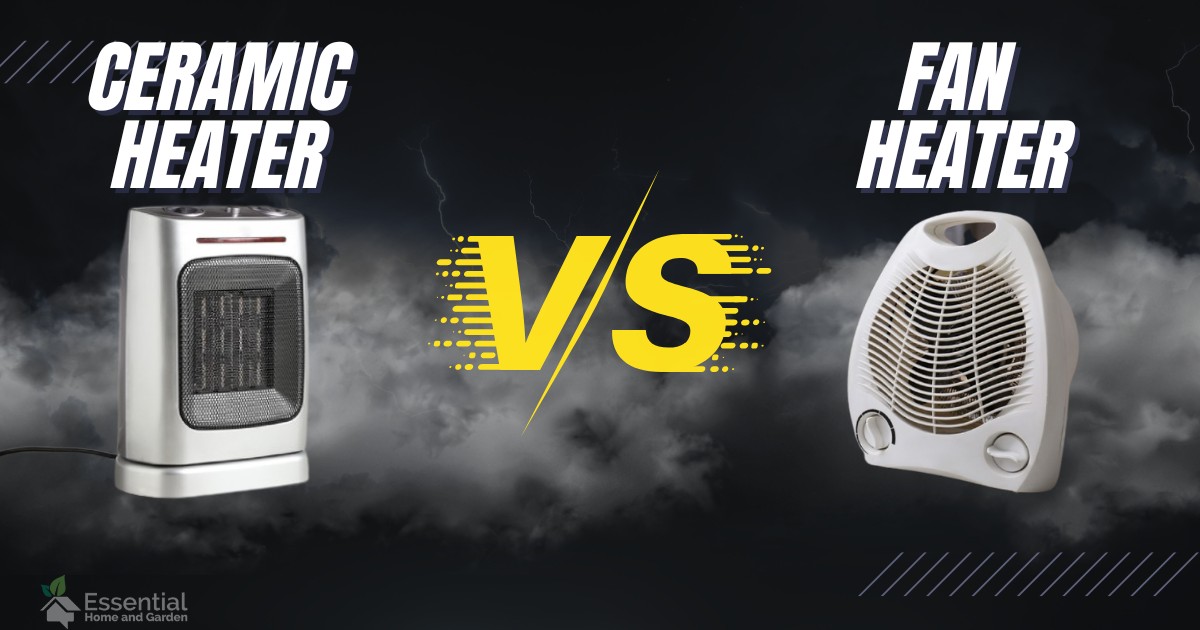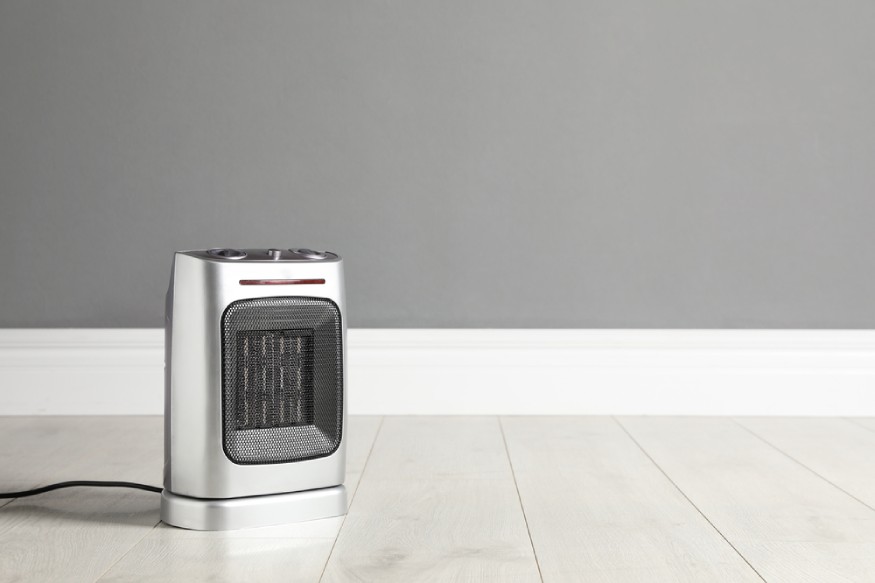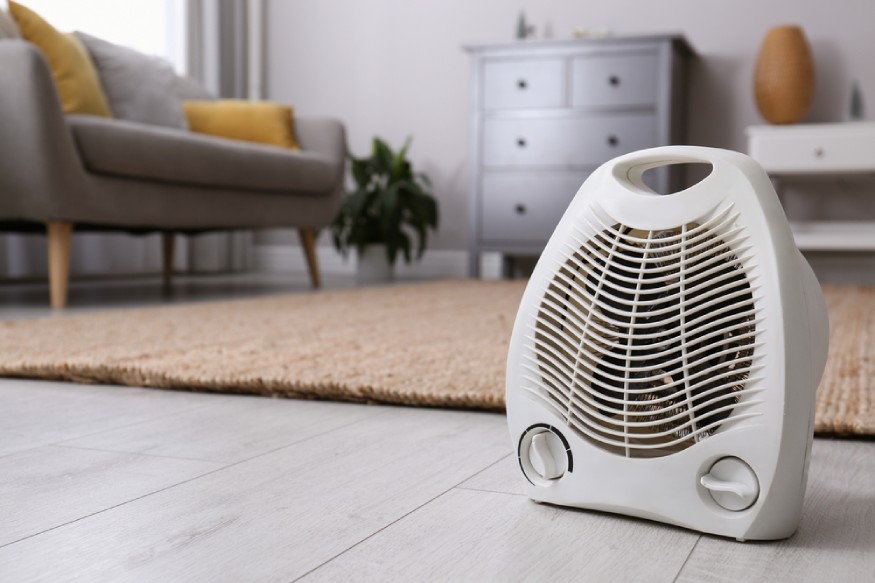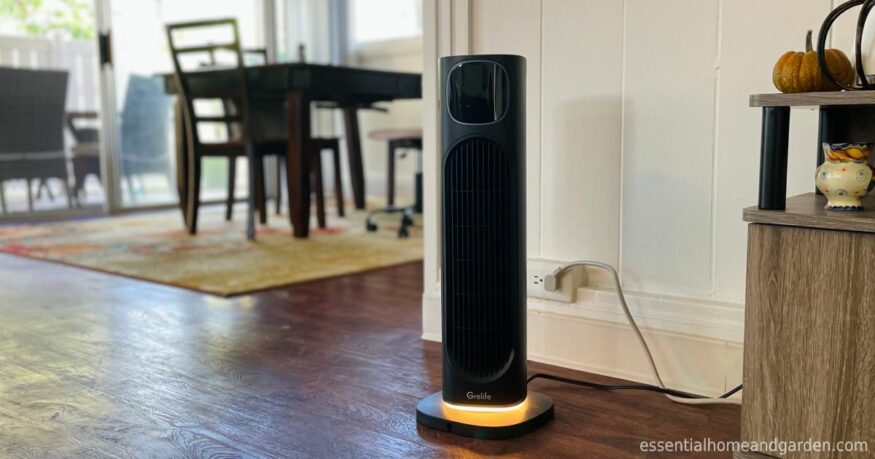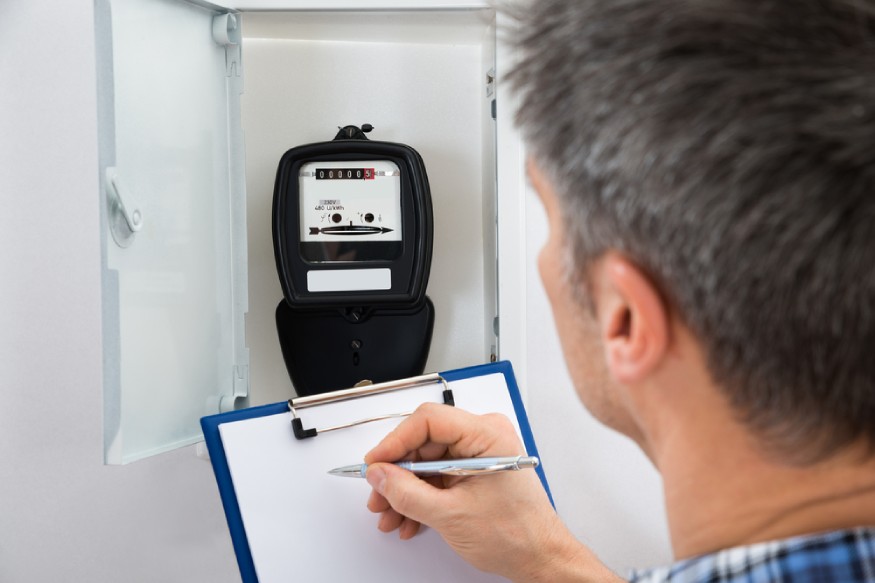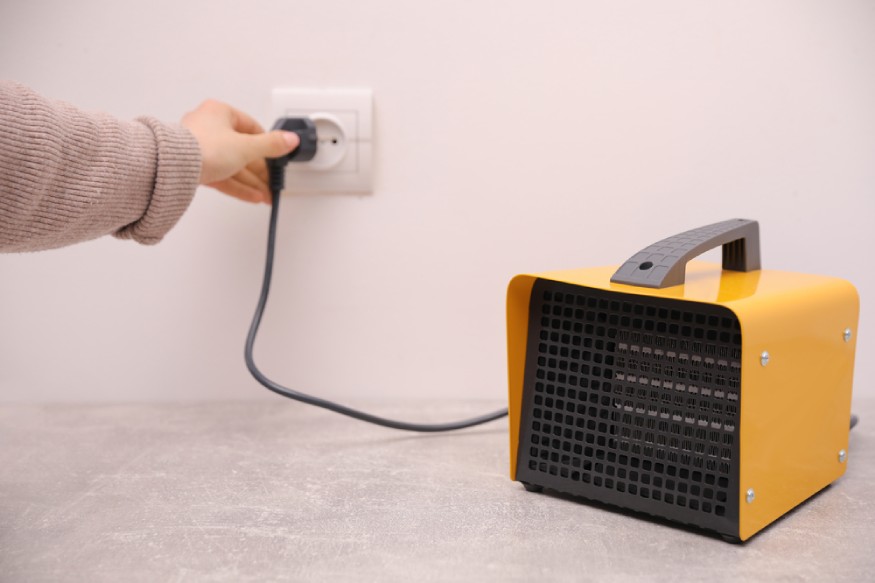Ceramic heaters and fan heaters both sound like good choices and have numerous similarities, so what’s the difference? The primary difference falls to their heating mechanisms: while the ceramic heater uses a ceramic plate, fan heaters use filaments. This article explains this topic more in-depth, so continue reading to learn more!
Key Takeaways
If you’re short on time, here are a few key takeaways from the similarities and differences between ceramic and fan heaters:
- Both options are highly efficient
- Both are ideal for medium spaces
- Ceramic heaters have more safety features
- Fan heaters cost slightly more to operate
Ceramic Heater vs. Fan Heater Comparison Table
Ceramic heaters and fan heaters are excellent choices for easy, convenient, and portable heat solutions. They’re strikingly similar, with decent heating efficiencies, utility costs, and applications, but a few differences create a clear separation. The chart below offers a quick look at the details, which we’ll explain below.
| Ceramic Heater | Fan Heater | |
|---|---|---|
| Ave. Unit Cost | $30 to $150 | $30 to $200 |
| Heating Element | Ceramic plate | Filament |
| Heating Efficiency | Good | Good |
| Utility Costs | $0.18/hour | $0.20/hour |
| Ideal for | Medium-sized spaces | Medium-sized spaces |
What Is A Ceramic Heater?
Ceramic heaters are a type of portable heater featuring a ceramic plate. While the name points to all-ceramic construction, these products usually consist of a plastic housing with metal coils inside.
They function using the principle of resistive heating, so it passes an electric current through a conductor to produce heat. The ceramic plates are conductors in these heaters, providing resistance to the current. As the current struggles to force its way through, it produces more heat.
Ceramic heaters can operate with or without a fan, although many feature fans for more even heat distribution. Operation is simple – adjust the thermostat, ensure the system has power, and let it work.
Pros
- Highly efficient
- Inexpensive to operate compared to some heaters
- Generally safe to use
- No harmful emissions
- Small and easily portable
Cons
- Can take a while to heat an area
- Can be pricier than other heaters
- Noisy
What Is A Fan Heater?
Fan heaters operate with fans that circulate the heated air throughout the room. The system has metal coils that produce heat as electricity flows through them. Electricity flows into the heating element, where it transforms from electrical energy to heat energy.
As the system produces heat, the fan pushes it away from the system, which helps heat the entire space.
These heaters are relatively basic, so the design is cut and dry. Some fan heaters have extra features, such as air purification, and these models tend to be considerably pricier than other models with basic features.
Pros
- Efficient heating
- Fan helps distribute warm air evenly throughout the space
- Generally safe to use
- Easily portable
- Simple operation
Cons
- Noisy
- May not have air-purifying features
- Can be expensive
- Takes a while to heat large spaces
Ceramic Heater vs. Fan Heater: 6 Differences
Although ceramic and fan heaters share multiple similarities, there are a few differences to consider. So, if you’re unsure which option to choose, here are a few aspects for comparison:
Heating Element
As mentioned, ceramic heaters have ceramic plates, while fan heaters feature filaments. They both use electricity to produce heat, using resistive heating to convert electric energy into heat energy.
Both ceramic and fan heaters come in different sizes or BTU (British Thermal Unit) ratings, so be sure to get one large enough to heat your space.
Heating Efficiency
Although these heaters are decently energy efficient, they do best as supplemental heating. That means they are recommended for heating smaller spaces, as they don’t work well for overly large spaces.
Note: While you can use them to heat a larger space, it’ll take a while to feel the differences throughout the entire space.
In general, fan heaters tend to heat a space faster, even though ceramic heaters are faster at getting hot. This is because fan heaters push the heated air throughout the area, ensuring even heat distribution.
Ceramic heaters with fans will usually heat large spaces faster than fan heaters, but those without will take longer to warm the room.
Utility Costs
The difference in utility costs between ceramic and fan heaters is minor. On average, ceramic heaters cost about $0.18 per hour. If you run the heater for eight hours per day, seven days per week, you can expect to pay approximately $10.08 each week or $40.32 per month in heating costs. Over a four-month heating season, it would cost roughly $161.28.
On the flip side, the average fan heater costs about $0.20 per hour to run. Using the same time frames, you can expect to pay $11.20 per week, $44.80 per month, and $179.20 for a four-month heating season.
Of course, utility costs may vary based on electricity prices in your area. On top of that, some models are more efficient than others. Pay attention to the labels on each model, as they should tell you how much energy the model consumes.
The differences are minor, with only a few dollars worth of change between monthly operating costs.
Note: A ceramic heater might be your better option if you want a more affordable heater. Remember, this might not always be true (some heaters are more efficient), so pay attention to energy labels!
Installation
While you can buy wall-mounted electric heaters, many folks use ceramic and fan heaters as portable heaters. Due to their mobile nature, installation isn’t necessary. That said, if you decide to invest in a wall-mounted heater, you can expect to pay between $85 and $200 in labor, although costs may be higher than $400 for complex electrical work.
Remember, this doesn’t include the heater’s price, so costs can range from $185 to $1,000.
Maintenance
With any appliance, maintenance is an essential part of prolonging its lifespan. Without routine care, gunk may begin to build up in the system, potentially leading to damage or failure. So, like any other appliance, ceramic and fan heaters need maintenance every now and again.
The exact maintenance needs vary based on the model. For example, ceramic heaters don’t need fan cleaning if they don’t feature one, but fan heaters will require this periodically. Or some models feature air purification capabilities, so filter changes are necessary.
Ultimately, the exact maintenance and schedule depend on the heater you choose, so pay attention to the owner’s manual for guidelines.
Safety Features
Although the simplicity of a fan heater is the main selling point, it can be a drawback.
While ceramic heaters feature multiple safety features, fan heaters usually don’t have as many safety add-ons. For example, ceramic heaters often feature automatic shut-off in case of overheating, cool-touch housing, and tip-over safety switches.
Fan heaters typically don’t have as many safety features, so a ceramic heater might be the better option if you’re looking for a safer choice (better for kids and pets).
